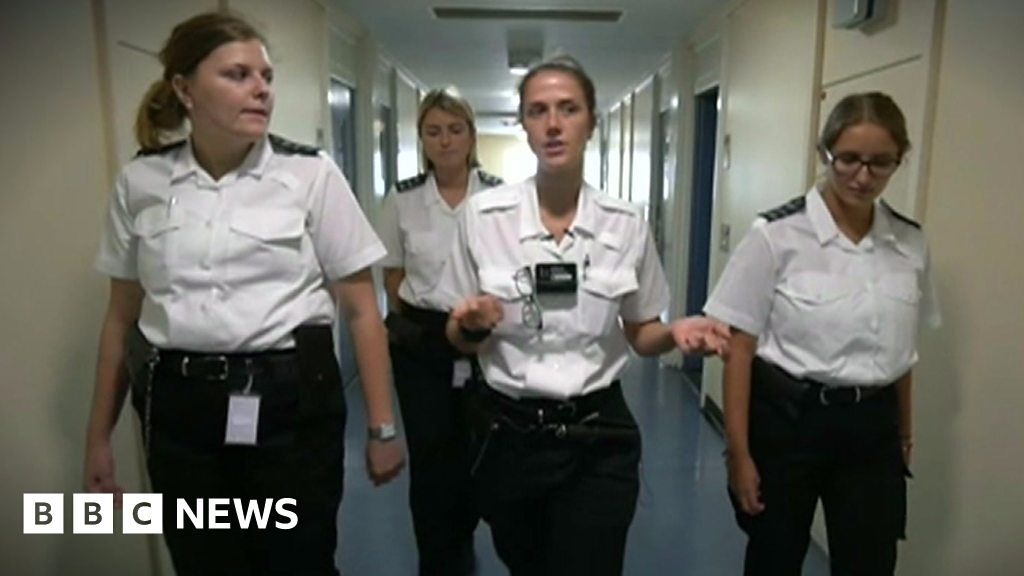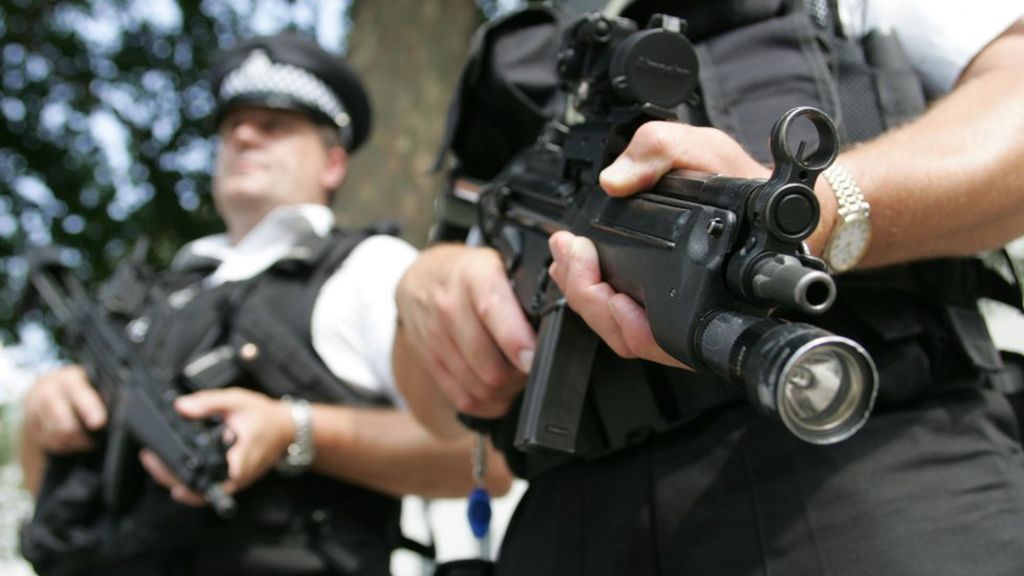Prison officers play a critical role in maintaining security and order within correctional facilities. One of the most frequently asked questions about their duties is whether they carry guns. Understanding the role of firearms in prison security is essential for anyone interested in the criminal justice system or considering a career in corrections.
The use of firearms by prison officers is a topic of significant debate. While some argue that arming officers enhances safety, others believe it introduces unnecessary risks. This article explores the realities of whether prison officers carry guns, examining policies, regulations, and the context in which firearms may be used in prison environments.
By the end of this article, you'll have a clear understanding of the role of firearms in prison security, the training required for officers, and the broader implications of arming correctional staff. Let's dive in!
Read also:Penndot Photo Center Near Me Your Ultimate Guide To Finding The Best Photo Services
Table of Contents
- The Role of Prison Officers in Security
- Policies Regarding Guns in Prisons
- Variations in Policies Across Countries
- Training for Prison Officers Handling Firearms
- Risks and Challenges of Arming Prison Officers
- Alternatives to Firearms in Prison Security
- Statistics on the Use of Firearms in Prisons
- Case Studies: Real-Life Scenarios
- The Future of Firearms in Prison Security
- Conclusion: What Does This Mean for Prison Officers?
The Role of Prison Officers in Security
Prison officers are tasked with maintaining order and safety within correctional facilities. Their responsibilities include supervising inmates, preventing violence, and ensuring compliance with prison rules. While their primary tools are communication and de-escalation techniques, the question remains: do prison officers carry guns?
In most jurisdictions, prison officers do not routinely carry firearms. Instead, they rely on non-lethal methods such as batons, pepper spray, and communication devices. However, the presence of firearms in certain situations is not entirely ruled out. For example, specialized units within prisons may be authorized to use firearms in emergencies.
Key Responsibilities of Prison Officers
Here are some of the key responsibilities of prison officers:
- Monitoring inmate behavior and intervening when necessary.
- Conducting regular patrols and inspections of prison facilities.
- Providing support during emergencies, such as riots or escapes.
- Collaborating with other law enforcement agencies when required.
Policies Regarding Guns in Prisons
The use of firearms by prison officers is governed by strict policies that vary by country and even by individual correctional facilities. These policies are designed to balance the need for security with the potential risks associated with arming officers. In general, firearms are only authorized in specific circumstances, such as during high-risk situations or when dealing with violent offenders.
For example, in the United States, most prison officers do not carry firearms while on duty inside the facility. Instead, firearms are kept in secure locations and are only accessible in emergencies. This approach minimizes the risk of weapons being stolen or misused by inmates.
Factors Influencing Policy Decisions
Several factors influence whether prison officers are allowed to carry guns:
Read also:How Tall Is Kendall Jenner In Cm Unveiling The Height Of A Global Icon
- The level of violence within the facility.
- The type of inmates housed in the prison.
- The availability of alternative security measures.
- The history of incidents involving firearms in the facility.
Variations in Policies Across Countries
While many countries adopt similar policies regarding the use of firearms in prisons, there are notable differences. In the United Kingdom, for instance, prison officers are not armed, and firearms are only used by specially trained units in extreme situations. In contrast, some countries, such as Israel, have a more liberal approach, allowing certain prison officers to carry firearms as part of their standard equipment.
These variations reflect differing cultural attitudes toward firearms and the role of prison officers in maintaining security. Understanding these differences is crucial for anyone studying international prison systems or considering a career in corrections.
Examples of Country-Specific Policies
Here are some examples of country-specific policies:
- United States: Firearms are generally not carried by prison officers but are available in secure locations for emergencies.
- United Kingdom: Prison officers are not armed, and firearms are only used in extreme circumstances.
- Israel: Certain prison officers are authorized to carry firearms as part of their standard equipment.
Training for Prison Officers Handling Firearms
When prison officers are authorized to handle firearms, they undergo rigorous training to ensure they can use them safely and effectively. This training covers a wide range of topics, including marksmanship, conflict resolution, and legal considerations. The goal is to equip officers with the skills they need to make sound decisions in high-pressure situations.
In addition to practical training, officers receive instruction on the ethical use of force and the importance of de-escalation techniques. This comprehensive approach helps reduce the likelihood of unnecessary violence and ensures that firearms are only used as a last resort.
Key Components of Firearms Training
Here are some of the key components of firearms training for prison officers:
- Marksmanship and target practice.
- Conflict resolution and de-escalation techniques.
- Legal considerations and use-of-force policies.
- Psychological preparedness and stress management.
Risks and Challenges of Arming Prison Officers
While arming prison officers may enhance security in some situations, it also introduces significant risks and challenges. One of the primary concerns is the potential for firearms to be stolen or misused by inmates. Additionally, the presence of weapons in a confined space can escalate tensions and lead to violent confrontations.
Another challenge is ensuring that officers are adequately trained and prepared to handle firearms responsibly. Without proper training, the use of firearms can result in unintended consequences, such as accidental injuries or fatalities. These risks must be carefully weighed against the potential benefits of arming officers.
Common Risks Associated with Arming Prison Officers
Here are some of the common risks associated with arming prison officers:
- Increased likelihood of violence and confrontations.
- Potential for firearms to be stolen or misused by inmates.
- Unintended consequences of improper training or decision-making.
Alternatives to Firearms in Prison Security
In light of the risks associated with arming prison officers, many facilities have turned to alternative methods of maintaining security. These alternatives include the use of non-lethal weapons, such as pepper spray and tasers, as well as advanced surveillance technologies and communication systems. By adopting these alternatives, prisons can enhance security while minimizing the risks associated with firearms.
Moreover, the emphasis on conflict resolution and de-escalation techniques has proven effective in reducing the need for lethal force. Training officers in these methods can lead to safer and more humane prison environments.
Examples of Alternative Security Measures
Here are some examples of alternative security measures:
- Non-lethal weapons such as pepper spray and tasers.
- Advanced surveillance technologies, including CCTV and drones.
- Improved communication systems for rapid response to emergencies.
Statistics on the Use of Firearms in Prisons
Data on the use of firearms in prisons is limited but provides valuable insights into their effectiveness and risks. Studies have shown that the use of firearms in prison incidents is relatively rare, with most incidents being resolved through non-lethal means. However, when firearms are used, they often result in serious injuries or fatalities, highlighting the importance of careful policy-making and training.
For example, a study conducted by the Bureau of Justice Statistics in the United States found that firearms were used in less than 1% of all prison incidents. This low usage rate underscores the effectiveness of alternative security measures and the importance of de-escalation techniques.
Key Statistics on Firearms in Prisons
Here are some key statistics on the use of firearms in prisons:
- Firearms are used in less than 1% of all prison incidents.
- Most incidents are resolved through non-lethal means, such as communication and negotiation.
- When firearms are used, they often result in serious injuries or fatalities.
Case Studies: Real-Life Scenarios
To better understand the role of firearms in prison security, let's examine some real-life case studies. These scenarios illustrate the complexities involved in arming prison officers and the potential consequences of their decisions.
Case Study 1: A prison riot in the United States resulted in the deployment of a specially trained unit equipped with firearms. The unit successfully restored order without using lethal force, demonstrating the effectiveness of proper training and equipment.
Case Study 2: In a facility in the United Kingdom, an attempt to smuggle a firearm into the prison led to a major security breach. This incident highlighted the risks associated with firearms in prison environments and the importance of strict security protocols.
Lessons Learned from Case Studies
Here are some lessons learned from these case studies:
- Proper training and equipment are essential for effective use of firearms in prisons.
- Strict security protocols are necessary to prevent the smuggling of firearms into facilities.
- De-escalation techniques can be highly effective in resolving conflicts without resorting to lethal force.
The Future of Firearms in Prison Security
As technology continues to evolve, the role of firearms in prison security may change. Advances in surveillance, communication, and non-lethal weapons could reduce the need for lethal force, leading to safer and more humane prison environments. However, the decision to arm prison officers will always depend on the specific circumstances of each facility and the risks involved.
Looking ahead, it is crucial for policymakers, prison administrators, and correctional staff to work together to develop policies that balance security with the well-being of inmates and officers alike. By prioritizing training, technology, and de-escalation techniques, we can create a safer future for all involved in the correctional system.
Conclusion: What Does This Mean for Prison Officers?
In conclusion, the question of whether prison officers carry guns is complex and depends on a variety of factors, including jurisdiction, facility type, and individual policies. While firearms are not routinely carried by most prison officers, they remain an important tool in specific situations. Proper training, clear policies, and the use of alternative security measures are essential for ensuring the safety of both officers and inmates.
We encourage readers to share their thoughts and experiences in the comments below. Additionally, feel free to explore other articles on our site for more insights into the world of corrections and criminal justice. Together, we can work toward a safer and more just society.
References:
- Bureau of Justice Statistics. (2021). Use of Force in Prisons.
- United Nations Office on Drugs and Crime. (2019). Handbook on Prison Management.
- Ministry of Justice, UK. (2020). Prison Security Policies.

